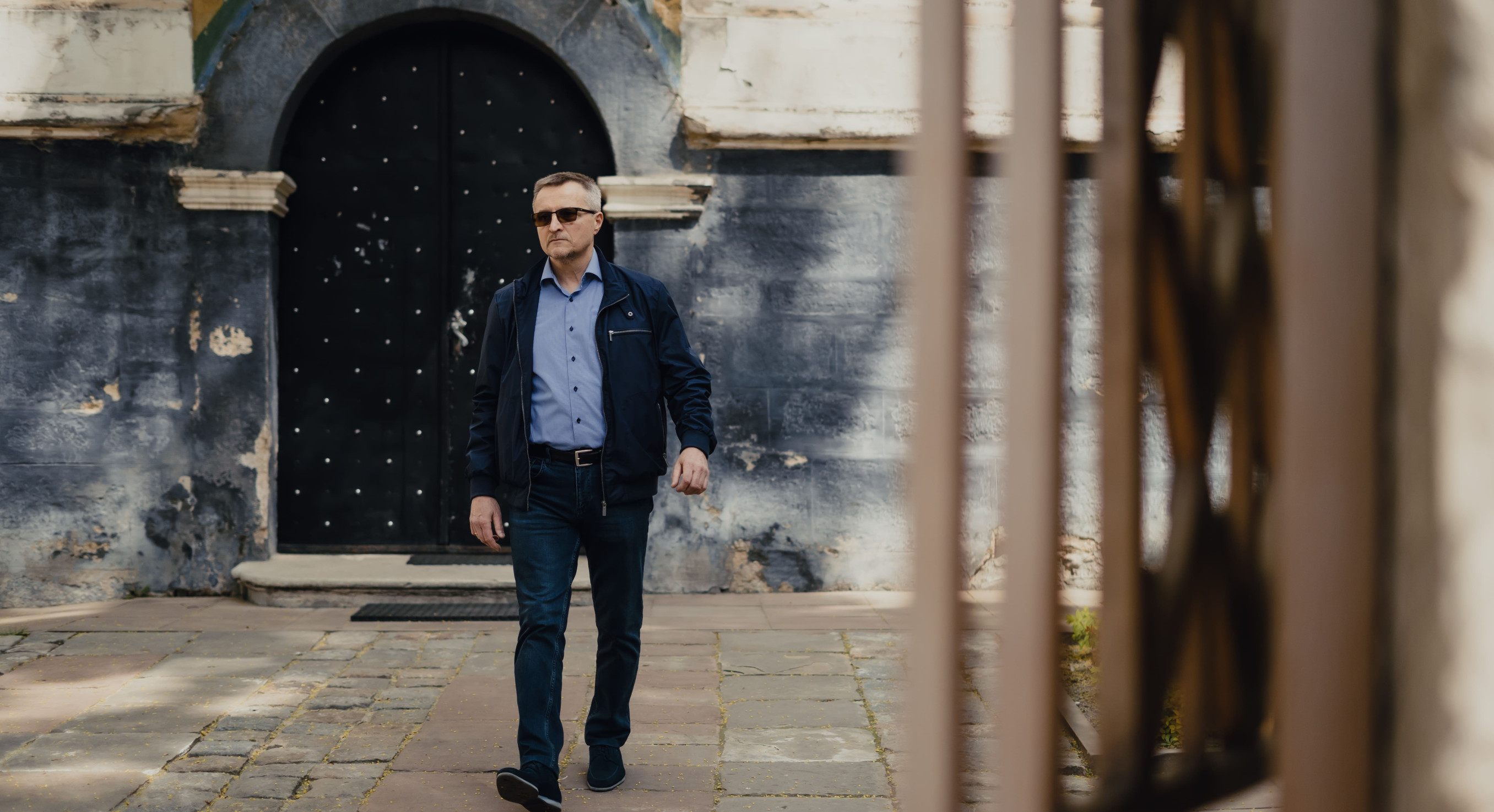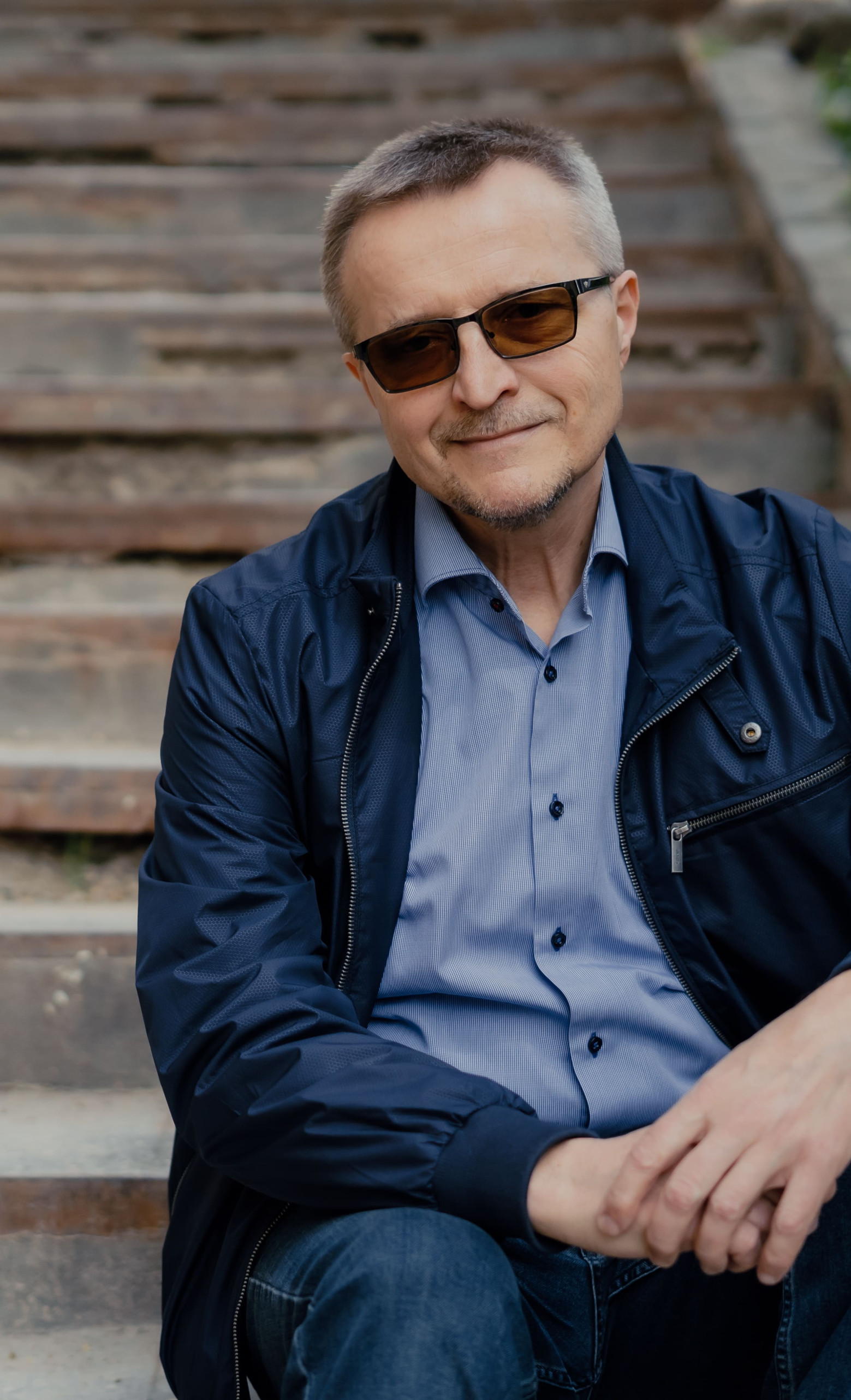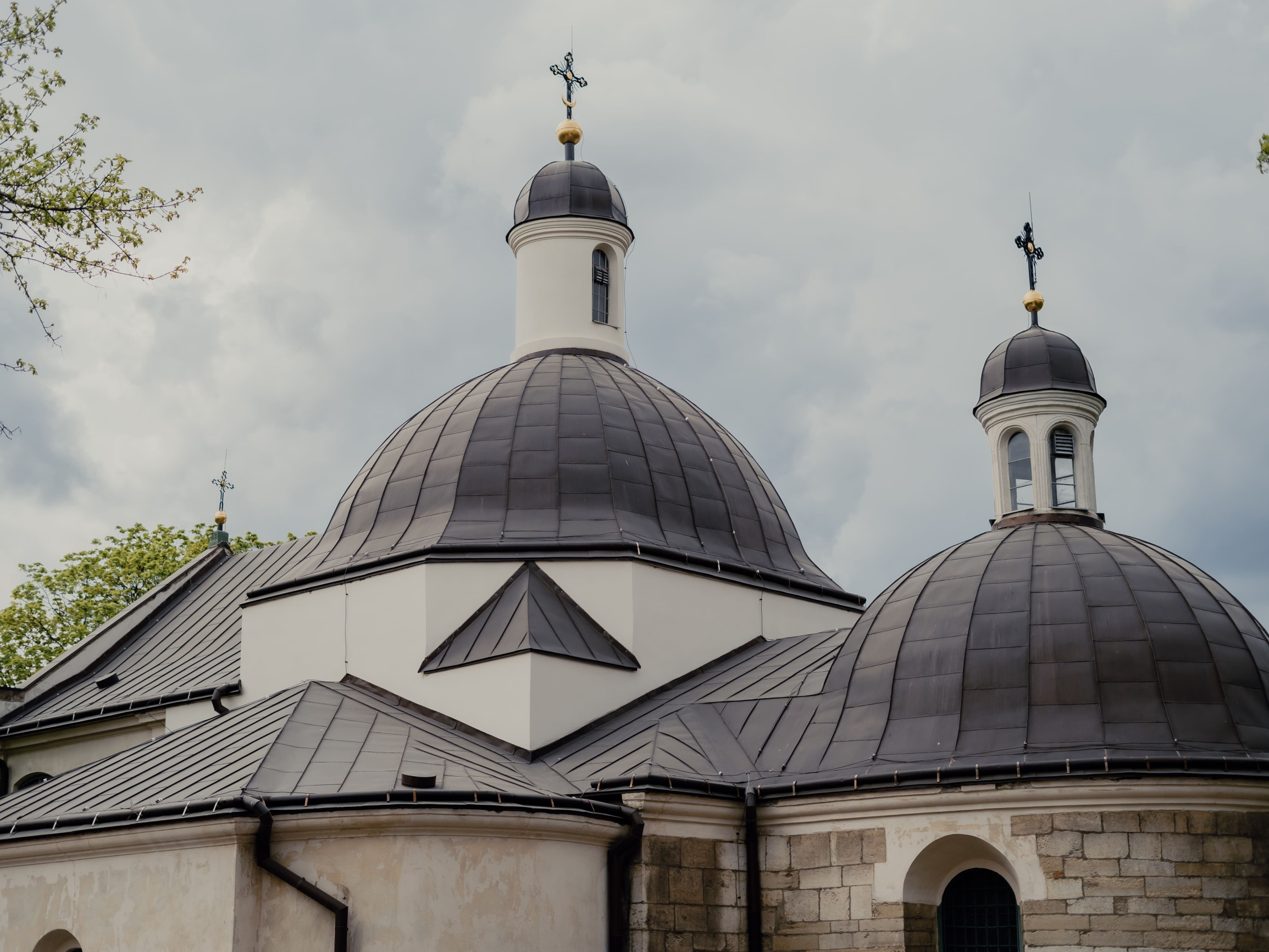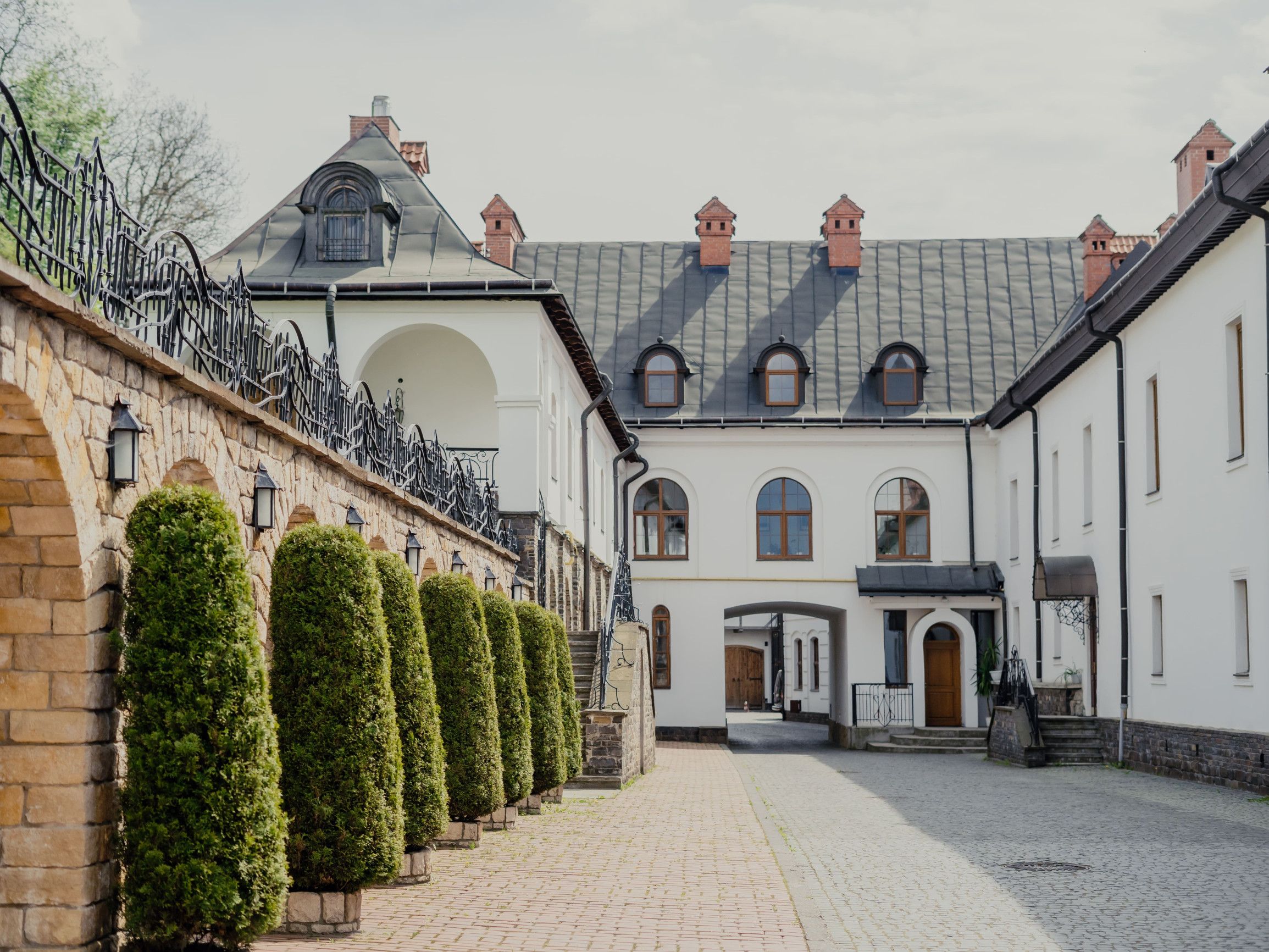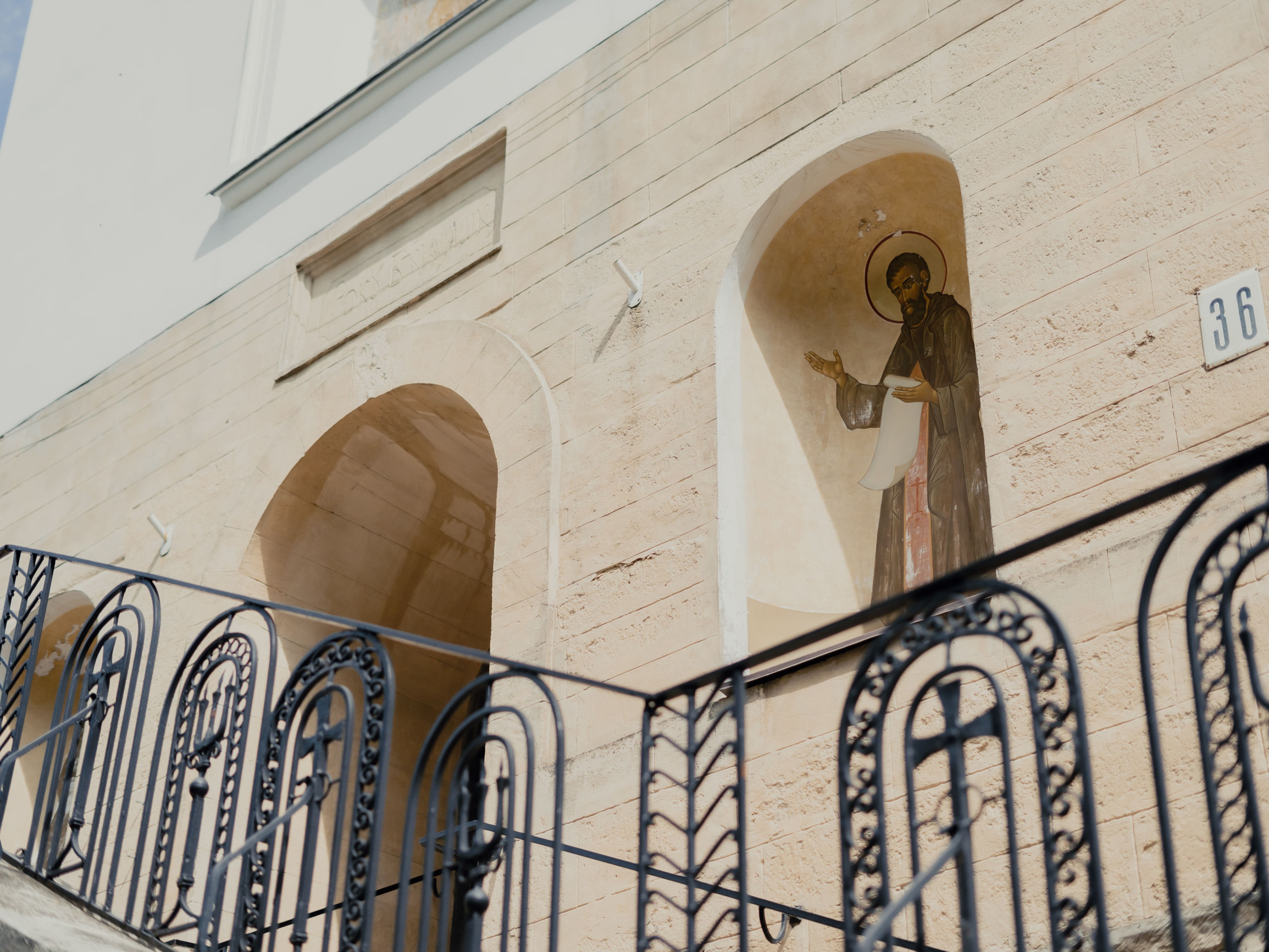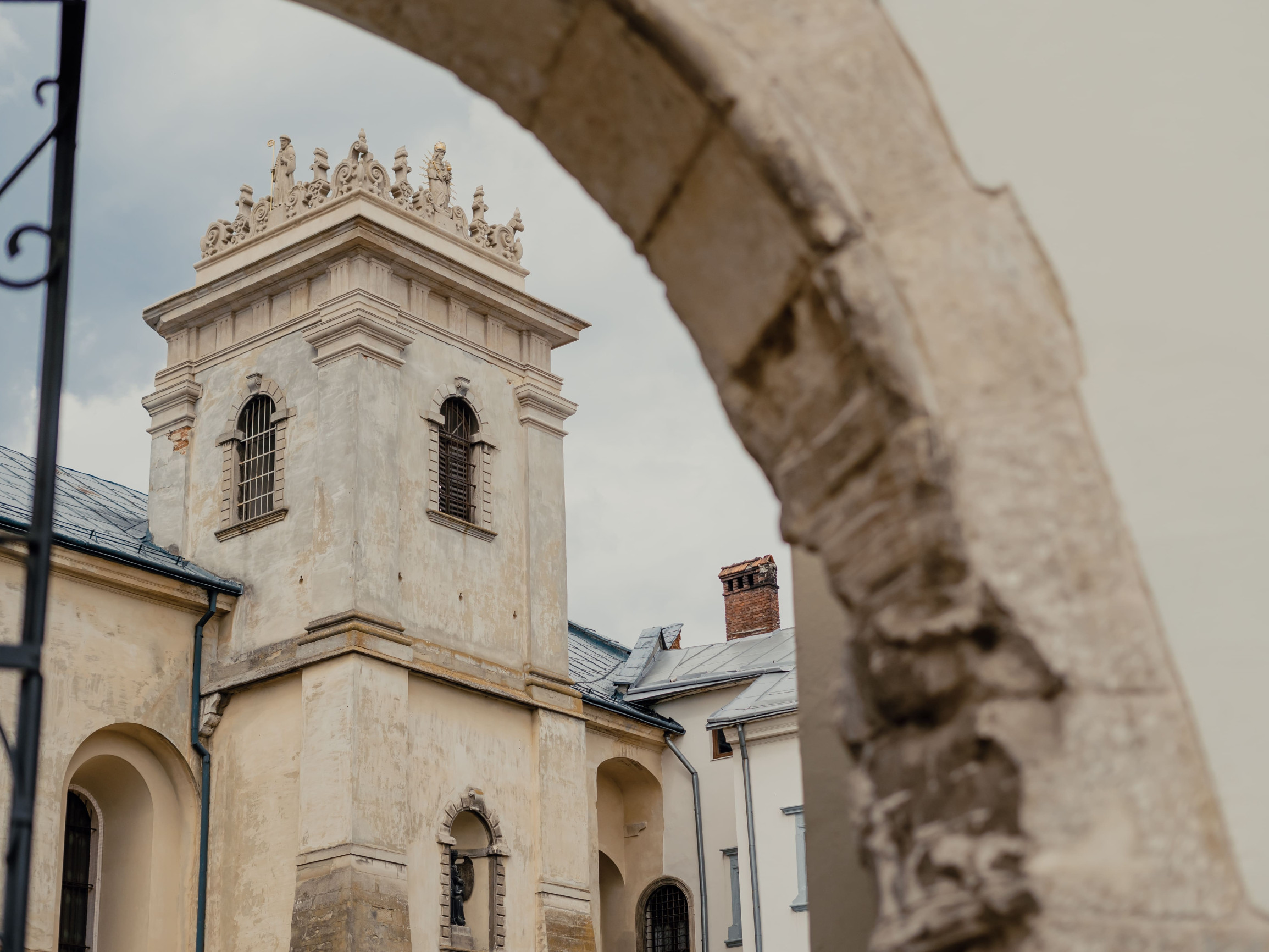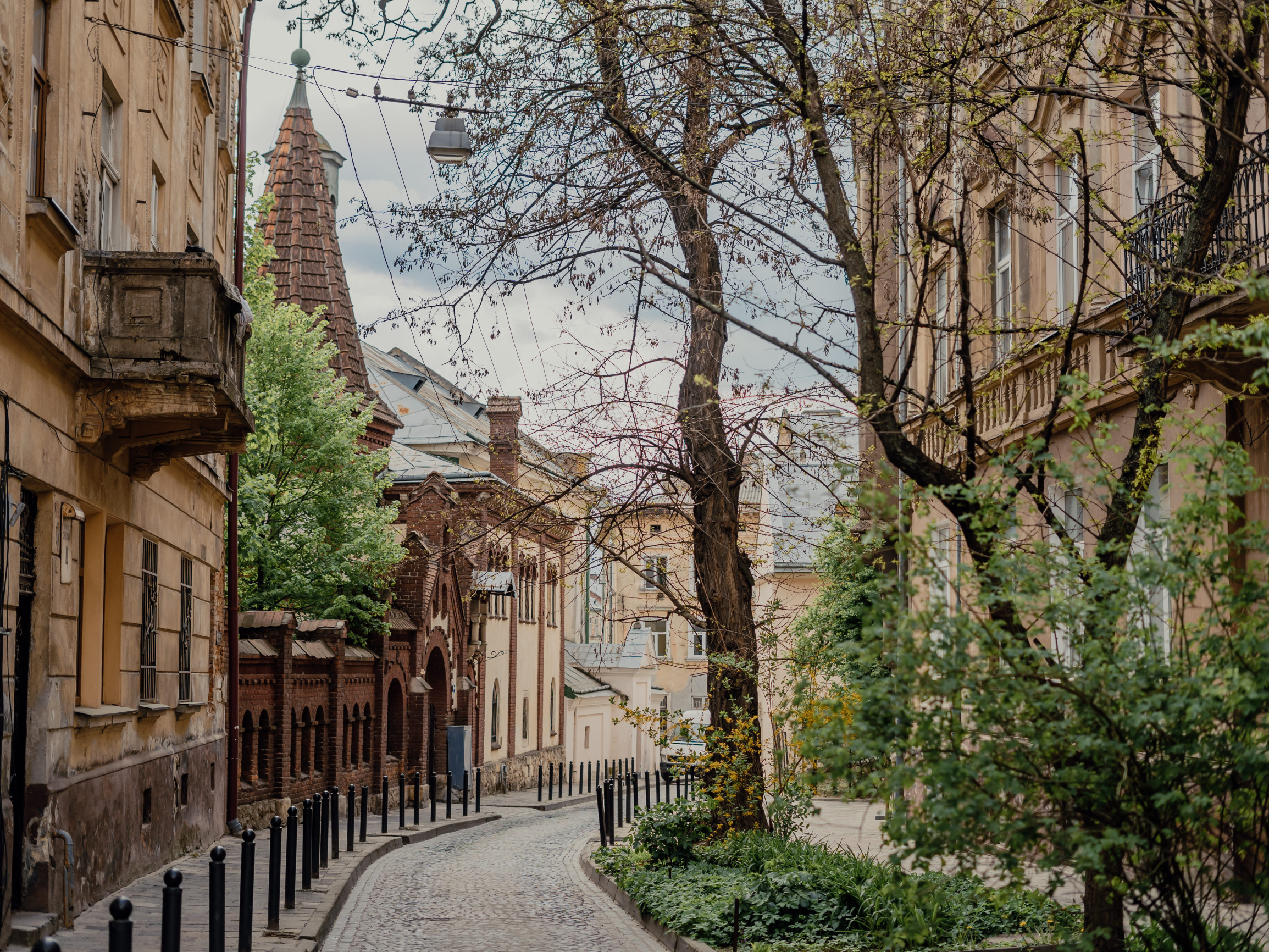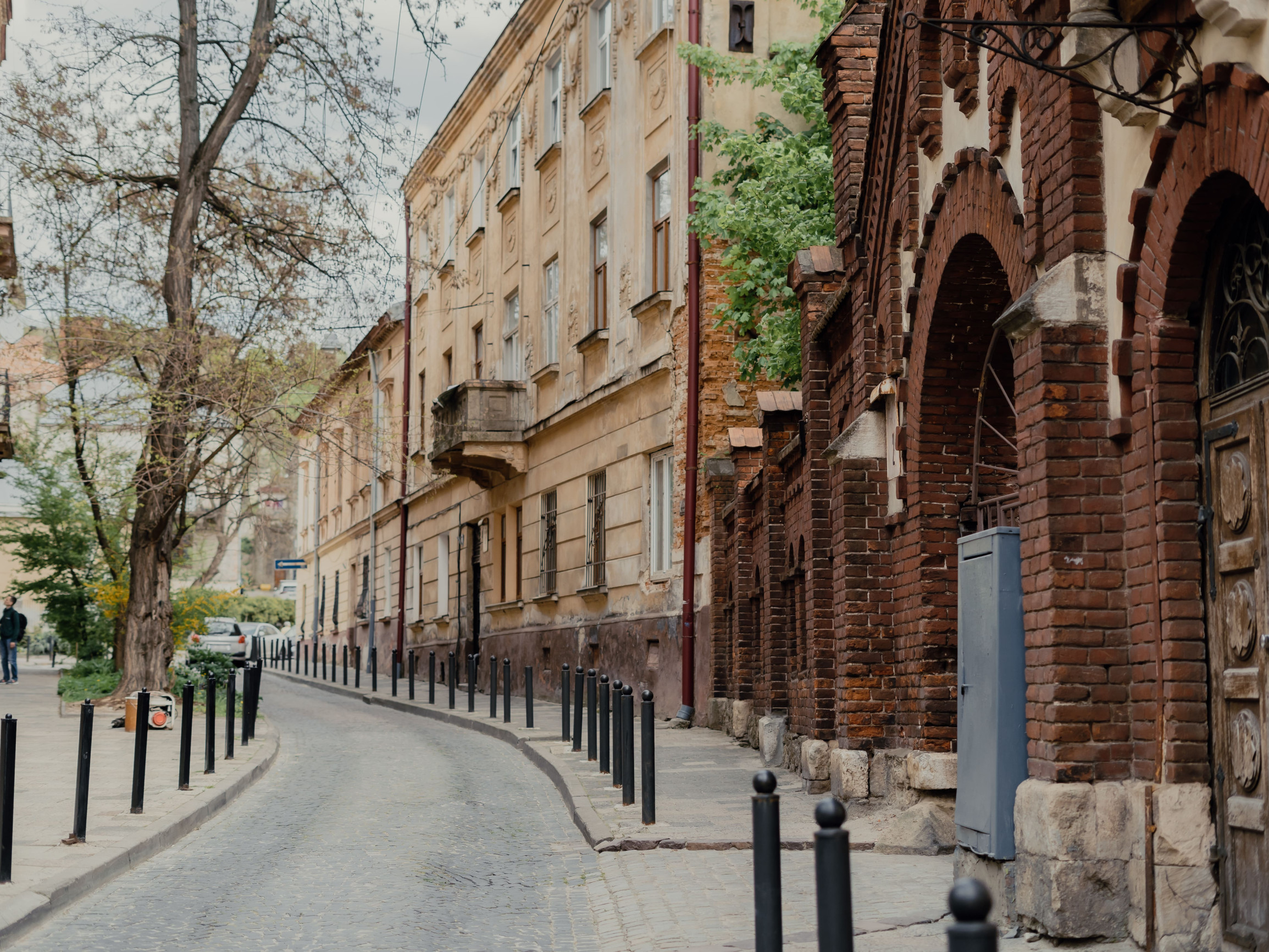The architecture of modern international relations promotes cooperation in economic, cultural, scientific and tourism spheres. An integral element of this relationship is public diplomacy.
It is also not surprising that many diplomatic missions operate in Lviv. One of them is the Honorary Consulate of Georgia, which resumed its activities in 2019.
Historically, paradoxically, in Lviv, next to the Armenian and Jewish quarters and Polish or Austrian influences, there you will not find a distinct Georgian heritage.
Traditionally, Georgians lived quite compactly in the south-eastern regions of Ukraine, and communication with Lviv was moderate and insignificant.
Today, the focus of the relationship is the exchange of ideas, values, elements of culture, the creation of joint projects and more.
About this, as well as: how has the urban appearance of Lviv changed? What is interesting about Zamarstynivska street? We will talk about Lesia Ukrainka’s Georgian period and the locations for Georgian delegations with the Honorary Consul of Georgia and a native of Lviv - Yaroslav Muzychko.
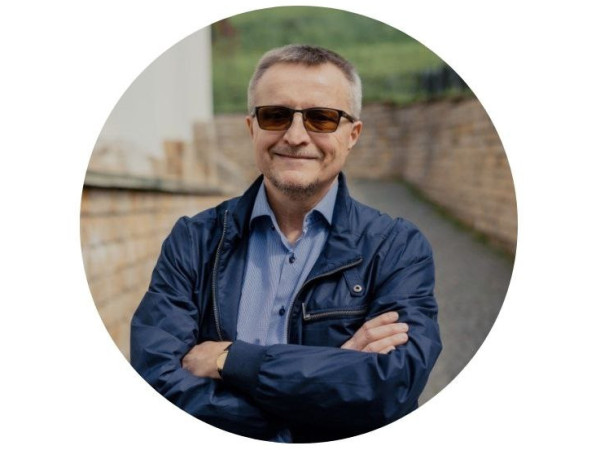
The route of the walk is formed around the personal memories of Mr Consul.
- Church of St. Nicholas (28A Bohdana Khmelnytskoho St.)
- St. Theodore Square
- Medova St.
- Monastery of St. Onuphrius (36 Bohdana Khmelnytskoho St.)
- Benedictine Church and Monastery (2 Vicheva St.)
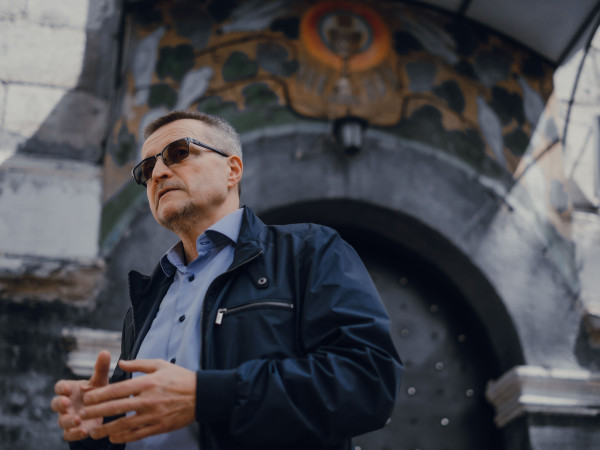
Past and present in the urban landscape of Lviv
I was born on Medovа street, which falls from Zamarstynivska street. It is the ancient name of this street, and it does not seem to have changed. First of all, this area is extremely interesting because this is where the development of Lviv began, as evidenced by many archaeological excavations conducted here.
The Church of St. Nicholas is one of the oldest sacred buildings in our city. Just imagine - the thirteenth century! A typical example of ancient Ukrainian architecture with elements of Byzantine influences.
During the Soviet era, church attendance was banned. To children - especially! Authorities or teachers stood at the entrance and recorded who went to church, especially on major holidays. Since my parents were members of the party, my grandmother took me here. It is a historical truth.
Despite atheistic propaganda and control of the Soviet government, the spirit of traditions and faith in the Lord was preserved within every Galician family. Many topics were "taboo", but in whispers, you could hear a lot.
The same part of the city, if you pay attention to the buildings, in the middle of the XIX century of the Austrian era. The old buildings that remained were not very fashionable. Therefore, the place is dotted with many rented houses, which are not characterized by high aesthetics - they were simply functional for life.
Usually, it is not crowded. Naturally, the vast majority of tourists walk quite well-trodden routes. It is necessary to free up a little Rynok Square, to conduct a kind of "decentralization" of tourism, to draw attention to other, no less interesting, areas.
For example, here, note these small stairs on Pylnykarska street are a direct route to the High Castle, although few people know about it.
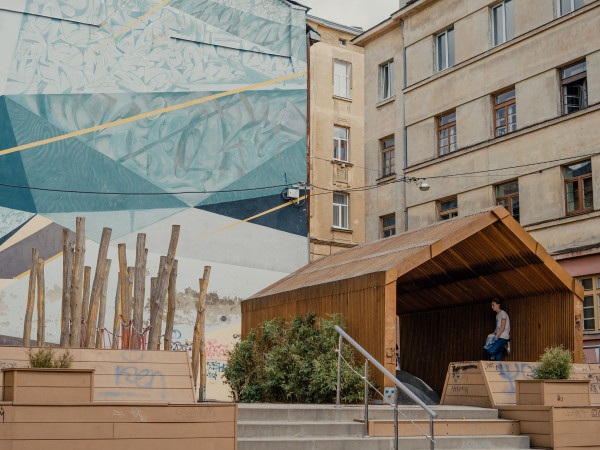
The former Central Square (now St. Theodore's) has changed significantly. In Soviet times, there was a final stop on some suburban routes, but the noise never seemed to subside.
The buildings around are almost unchanged only plastic windows significantly damage the facades. Authentic wooden window frames are another matter. I was faced with it when they were taken out of the old windows: there is such wood - it rings like music; it is impossible to pull out a nail.

At the corner of St. Theodore Square and Vuhilna street is a magnificent building - a former synagogue "Yankel Janzer Schul". Built-in 1844, it has been repeatedly restored, which is reflected in the stylistic expressiveness, including elements of secession.
During the German occupation, there was a warehouse here, later the Soviet authorities converted it into a gym. Lviv Sholom Aleichem Society of Jewish Culture is now located here.

As a child, I remember the unspeakable noise and constant traffic in Central Square (St. Theodore), in addition to the "bus station", complemented by the bazaar.
In pre-war times, the market was common here. Krakivskyi (Krakow) market in its current form did not exist then, so, traditionally, residents of the surrounding villages came here to trade.
Cheese, butter, herbs, yeast - sold virtually everything. But the local Soviet authorities did not like it; they arranged the so-called "Raids", the effectiveness of which was not impressive.
People continued to trade on Medova street. And, so almost every day, bidding took place as tides.
What is interesting about Medova Street? The fact that there was constant trade here, and the fact that I grew up here.
I lived in house №6. The gate remained authentic, except for the combination lock. Our house was a natural closed farm (laughs). Neighbours lived together: someone worked at a meat-packing plant, on the 5th floor lived the head of the Svitoch factory, opposite us was the director of the mill.
On the first floor, Mrs Horobtsova, a janitor, drove moonshine underground: on the second floor, Mrs Frosia baked waffles and sold them at "Krakivskyi". Authorities considered her a "speculator," but in fact, she was a "small entrepreneur." Everything could be "got" without leaving the house.
Nearby was the "Hastronom" (supermarket in a modern way) if there were no matches or salt - you could buy here.
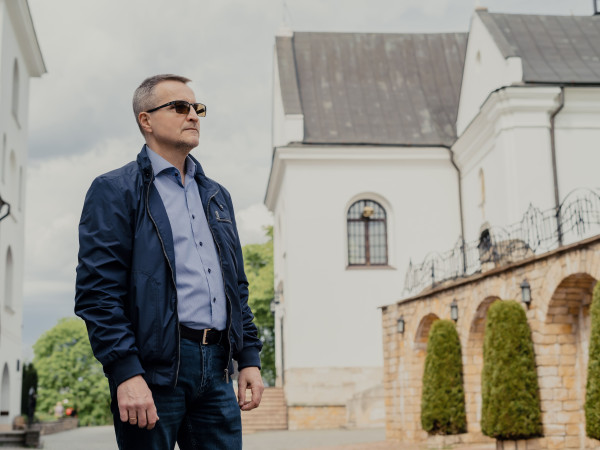
Another of the oldest temple shrines in Lviv is the monastery of St. Onuphrius. Historically, the first mention dates back to princely times.
And already in the middle of the XVI century, the construction of a brick church began at the expense of Prince Konstanty Wasyl Ostrogski. In 1583 Ivan Fedorovych, the author of the "Apostol" and the "Bukvar", was buried near the monastery in the cemetery.
The monastery of St. Onuphrius existed until 1946 when the Soviet authorities gave the territory of the Museum of Ethnography, Arts and Crafts - to preserve the funds. Activities resumed only in 1989.
The decoration of the monastery church was an iconostasis created in the XVIII century by the famous artist Luka Dolynskyi at the beginning of the XX century - there were icons of the brush of Modest Sosenko.
At the end of the XVI century, the Benedictine church and monastery were built. The monastery complex resembles a fortified fortress.
The famous Italian architect Pavlo Rymlianyn from Lviv was engaged in construction in the style of the late Renaissance. In front of the entrance, the entrance gate with an incredibly well-preserved fresco catches the eye.
In general, the features of the monastery-fortress strangely contain defensive elements, along with exquisite architectural harmony…
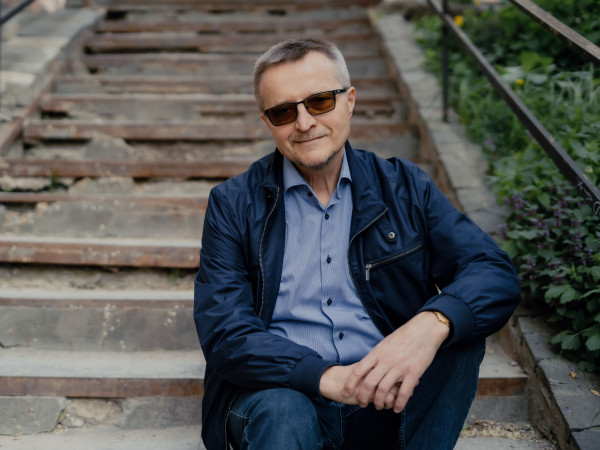
About myself.
After graduating from school, I entered the Faculty of History of Lviv State University of Ivan Franko (now - LNU of Ivan Franko). If you were not a member of the party, but a historian, then there are no prospects. After the army, he worked as a teacher of social studies at vocational schools. Already since independence - at the Department of Political Science at the Lviv Forestry Institute.
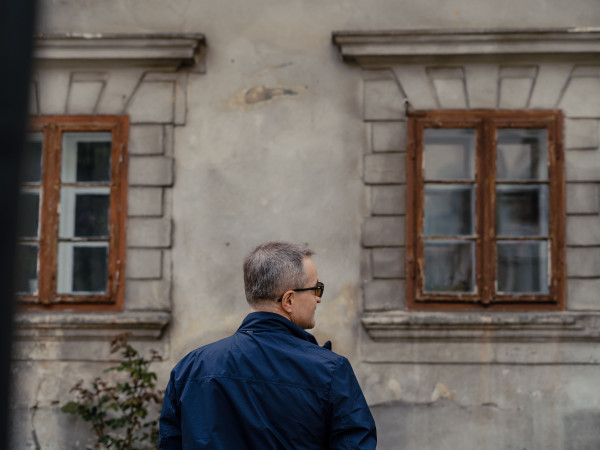
History of diplomatic representation
The beginning of the formation of Ukrainian-Georgian diplomatic relations dates back to the times of the Ukrainian National Republic. In 1918 the first consular offices of the Ukrainian State were founded in Tiflis and Batumi.
Later, the Georgian diplomatic mission (Ambassador V. Tevzaya) was opened in Kyiv, and soon the Consulate General in Odesa and the Consulate in Kharkiv. On December 5, 1918, official diplomatic relations were established between the countries.
The cessation of these institutions in both countries in 1921 was due to the actions of Bolshevik Russia. Further, diplomatic relations were restored during the independence of Ukraine and Georgia. On August 19, 1994, the Embassy of Georgia in Ukraine opened.
Also, the diplomatic space of Georgia is represented by the Embassy in Kyiv, the Consulate General in Odesa and the Honorary Consulate in Kharkiv.
On June 20, 2019, the work of the Honorary Consulate of Georgia was resumed at 8 Hrebinky Street in Lviv. The Ambassador Extraordinary and Plenipotentiary of Georgia to Ukraine - Gela Dumbadze, and representatives of the authorities of Lviv and the region took part in the celebrations.

What do I have to do with Georgia?
Everything is much simpler than it seems: since 2010, I have been a deputy of the Lviv City Council, chairman of the commission on culture, promotion, mass media and tourism, and later worked in the Department of International Cooperation of the Lviv Regional State Administration.
At that time, there were intensive diplomatic exchanges with Lviv. The Georgian ambassador has visited us many times, and we have organized joint projects. In particular, the first visits of the National Ballet of Georgia - Sukhishvili, performances of jazz performers at the Lviv Opera and Philharmonic, etc.
With such cooperation, the absence of a Georgian diplomatic mission in Lviv looked strange. They also agreed on the need to resume the activities of the Honorary Consulate, which I later headed. However, the Honorary Consulates of Georgia were previously opened twice in Lviv, but their activities were terminated for various reasons.
The main activity of the Honorary Consul is to strengthen ties between Georgia and Ukraine in the field of business, entrepreneurship, science and culture, assistance and protection of the rights and interests of legal entities and citizens of Georgia.
I will single out a few among the joint projects.
We had a long period of cooperation with Mr Yaroslav Fedoryshyn, the founder of the Lviv Academic Theater "Resurrection" and artistic director of the International Theater Festival "Golden Lion". Our troublesome work was connected with the last one. We jointly organized the arrival of representatives of Georgian theatres.
We discussed the organization of events dedicated to the Independence Day of Georgia (May 26). We planned to hold the Tbilisoba festival, a traditional Georgian holiday dedicated to the collection of grapes and young wine. However, to implement, unfortunately, failed, preventing Covid.
We discussed the organization of events dedicated to the Independence Day of Georgia (May 26). We planned to hold the Tbilisoba festival, a traditional Georgian holiday dedicated to the collection of grapes and young wine. However, to implement, unfortunately, failed, preventing Covid.
Last year, Ukraine celebrated the 150th anniversary of Lesia Ukrainka's birth, and a wonderful event took place in Sudova Vyshnia called "Lesia 150. Lesia and Georgia - Triumph and Tragedy." The main idea is to show the figure of Lesia Ukrainka through the prism of the Georgian period of her life and work.
"If I were not Ukrainian, I would like to be Georgian," words that express unspeakable friendship and admiration for the Georgian people.
They talked about everything: meeting Nestor Gambarashvili, her trips to Georgia, including for treatment, and restoration of the museum in Surami. In addition, let's not forget that Lesia wrote her immortal "Forest Song" in Georgia, in Kutaisi.
Attendees had the opportunity to visit the real stables of the Austrian Empire (by the way, there are unique gutters made of white marble for watering horses) and try hippotherapy, which was practised by the writer.
One of the points of the perspective program is the development of joint initiatives for the preservation of cultural heritage. To this end, it is planned to establish cooperation between the International Council for the Protection of Monuments and Historic Sites of Georgia and Ukraine, women's NGOs, and students of our universities.
After the start of the Russian-Ukrainian war, part of the Georgian Embassy, including Ambassador Extraordinary and Plenipotentiary Georgi Zakarashvili, stayed within the walls of the Honorary Consulate for more than two months.
Work has been successfully established, and more than 2,000 Georgian citizens, mostly refugees from eastern Ukraine, have been supported in evacuating to Georgia via Poland.
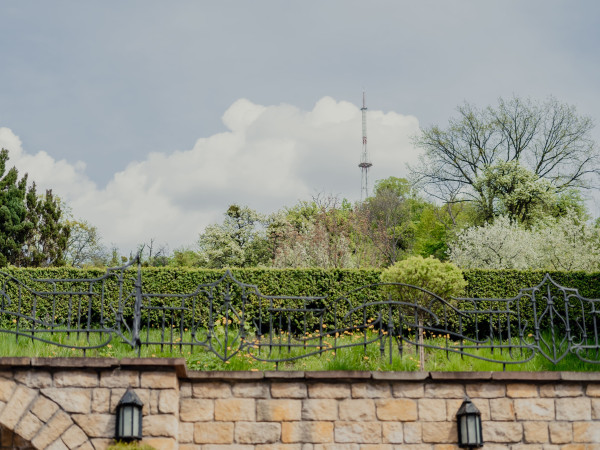
What do Ukrainians and Georgians have in common?
They say that we are so similar - good, open, and we sing well. I think these are all stereotypes I would not like to incline stereotypes.
Frankly, the issue is complex and multifaceted, but if it is simple, it is our and their sincerity, self-esteem and love for freedom.
As for the war, Georgia: both the government and the people support Ukraine at all levels and on international platforms.
Georgians are actively helping Ukrainians, cheering for our Victory, and sending a significant amount of humanitarian aid. Since 2014, volunteers from Georgia have been involved in the war against Russia.
Top 5 places for guests from Georgia:
- High Castle. Every Lviv resident must visit the High Castle at least four times: for a pen with his father as a child, after graduating from school to meet the dawn, hugging a loved one well, and finally - with his child to show what a beautiful city we live in;
- Historical Museum (24 Rynok Square);
- Rynok Square and Town Hall;
- Monastery of St. Onuphrius;
- A walk through the monuments of Secession architecture.
